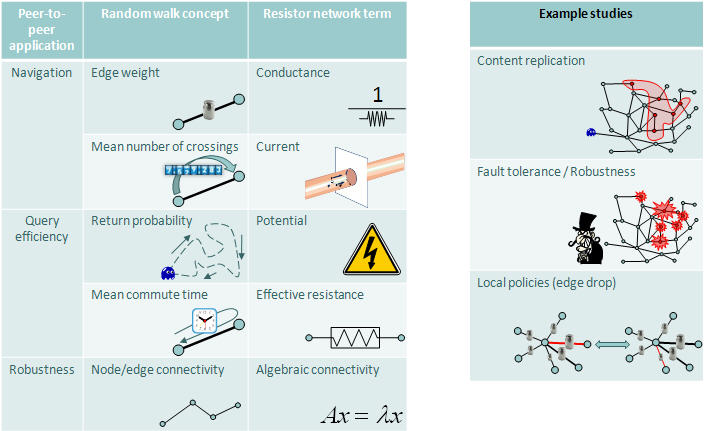|
|

|
Research Project: Reasoning about unstructured overlay networks: an electrical circuit-inspired frameworkProject description | Publications |
Project description
Unstructured overlay networks for peer-to-peer applications are attractive due to low-maintenance requirements and inherent fault-tolerance and self-organizing properties. When combined with stochastic algorithms, they can be used efficiently for clustering, navigation, resource location and other services, in a directly competitive way to structured methods, which require more sophisticated algorithms for maintenance and fault tolerance. However, currently there is a limited selection of appropriate tools to use in the systematical performance evaluation of the these methods, as well as to experiment with new algorithms and their properties. This project ties-in a set of diverse techniques and metrics in a unifying framework, by building on a well-known association between probabilistic tools such as random walks and simple electrical circuits. The main goal of the project is to present a basic set of tools to facilitate the analysis of overlay network properties and the reasoning about algorithms for such networks. Towards that goal, a key feature of the proposed framework that could be utilized directly is its ability to measure and contrast the local and global impact of algorithmic decisions in peer-to-peer networks. In our work we provide an extensive set of example experimental studies that furthermore demonstrate the framework's capabilities in the overlay network context (work awarded Distinguished Paper award at Euro-Par 2009). Publications
|
|
|
|
|
|
© Distributed Computing and Systems Research Group Chalmers university of technology, Computing Science Department Rännvägen 6B, S-412 96, Gothenburg, Sweden (map) Phone: +46 (0)31-772 1000 (central), +46 (0)31-16 56 55 Last Updated 2011-05-05 by Webmaster |
 Top of Page
Top of Page